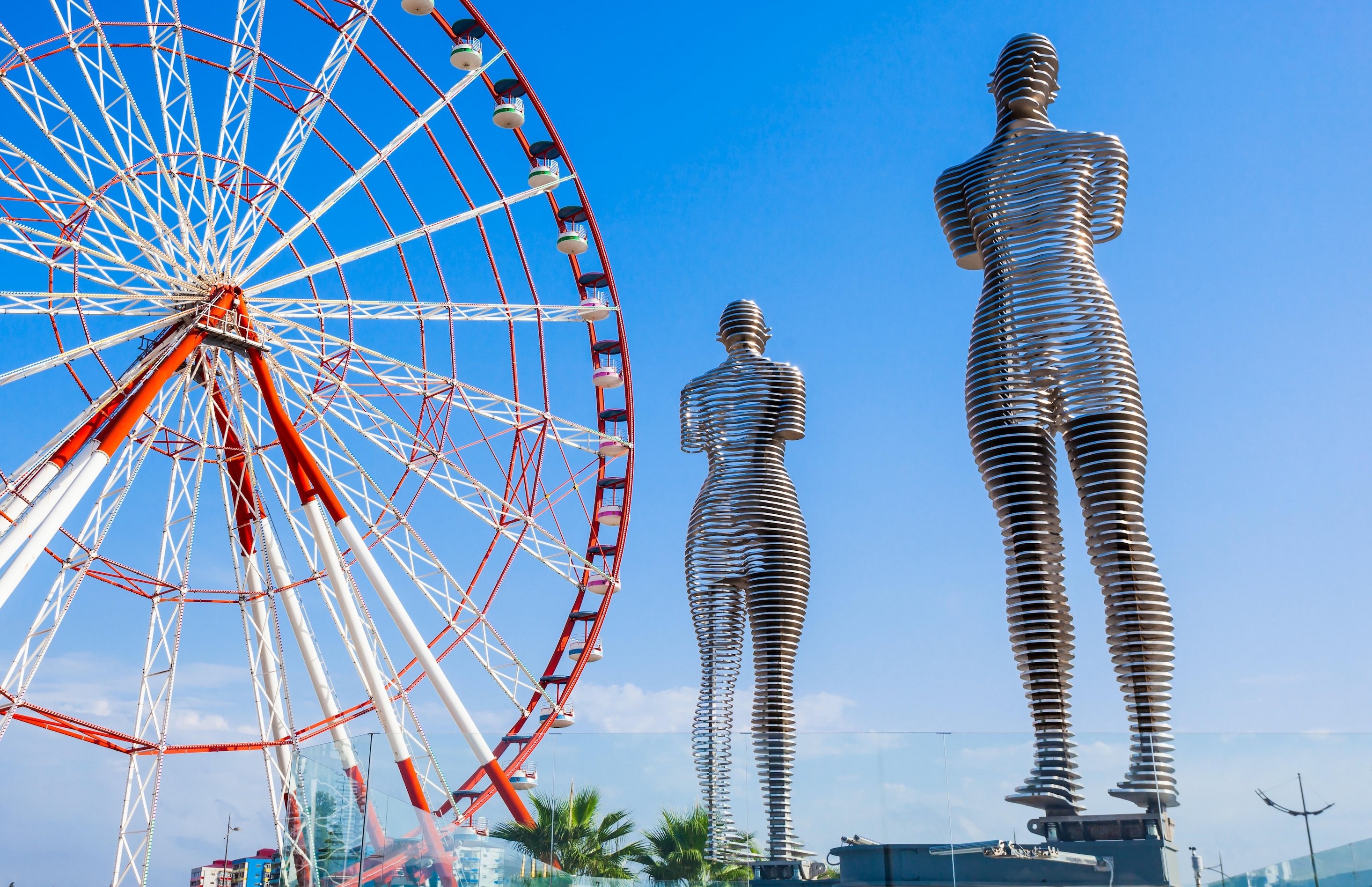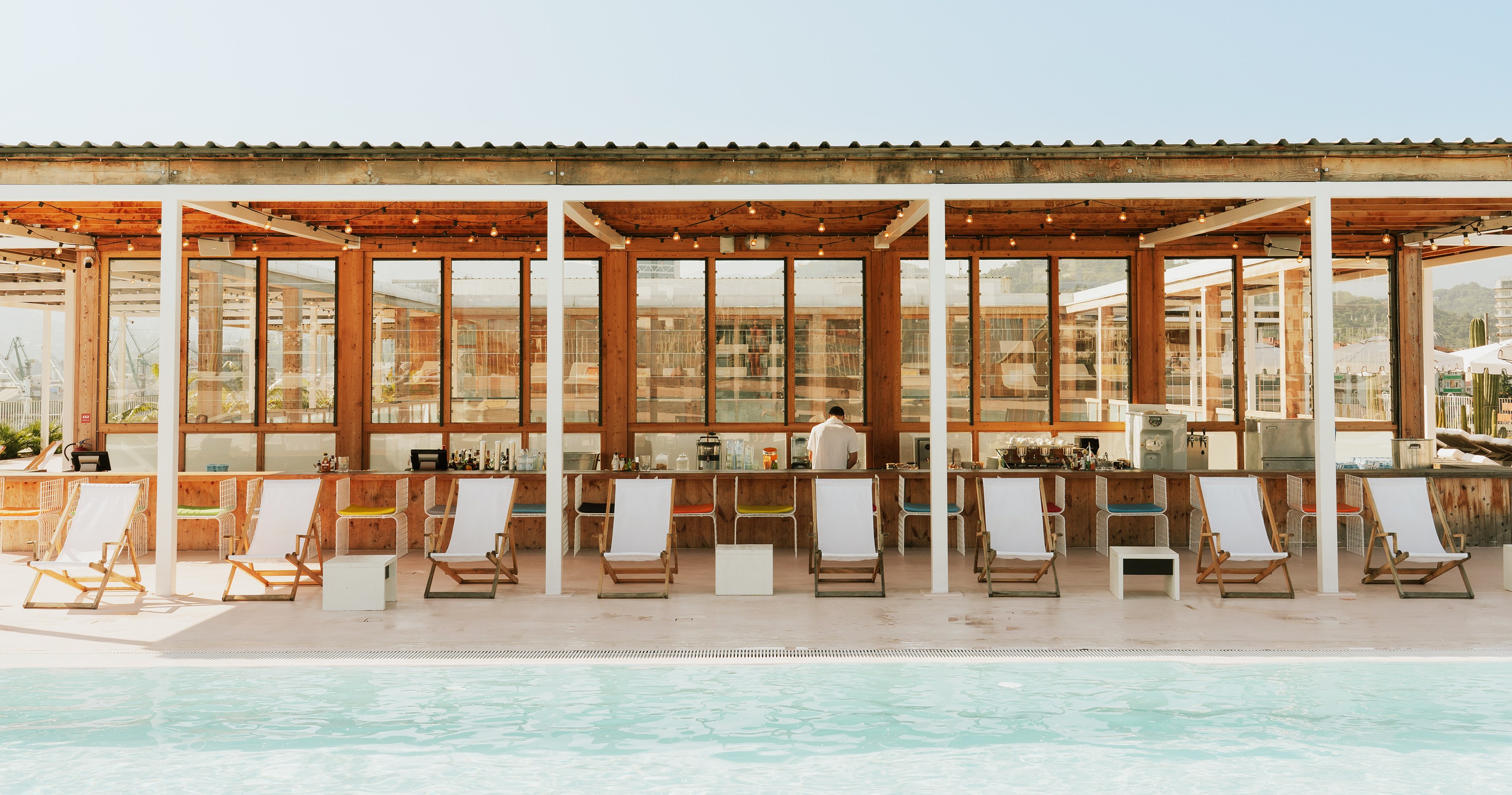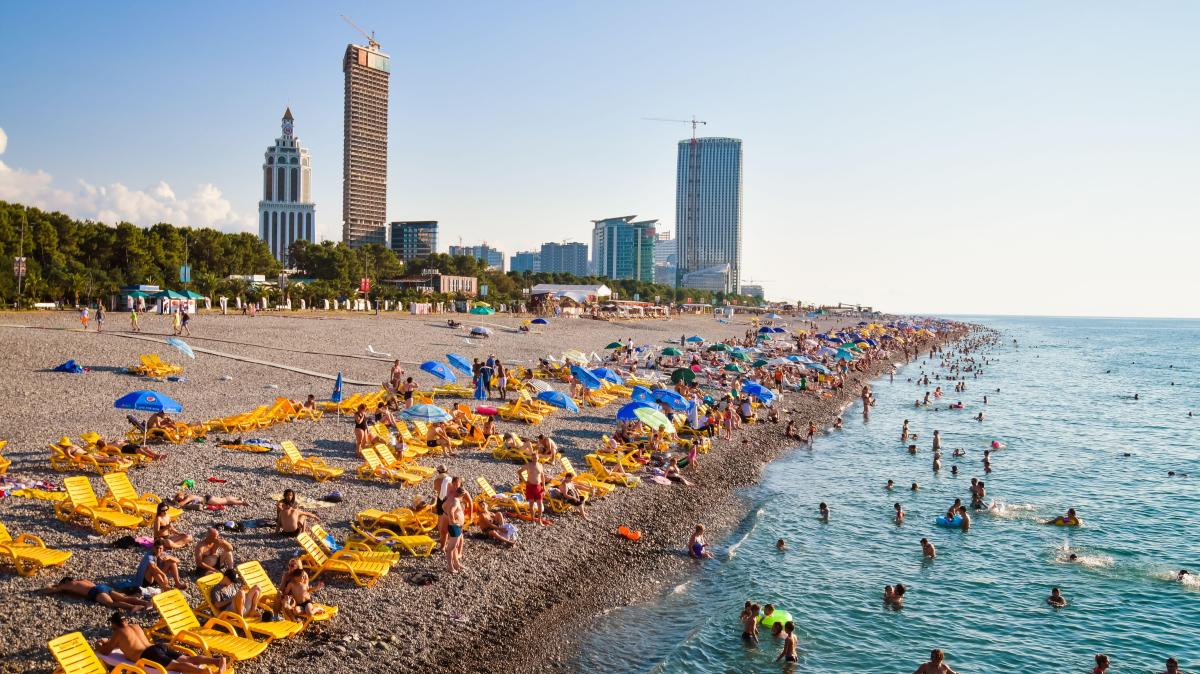Overshadowed by the towering peaks of the Caucasus Mountains, Georgia is best known for its 8,000-year-old winemaking traditions, soaring alpine landscapes and its cool capital, Tbilisi. Less well known is its 200-mile Black Sea coastline, the jewel of which is Georgia’s second city, Batumi, a beach resort once beloved by Soviet holidaymakers.
The capital of Georgia’s autonomous southwestern province of Adjara, Batumi sits 12 miles north of the Turkish border and a five-hour train ride west of Tbilisi. Georgia’s premier seaside resort is home to glitzy casinos and high-rise international hotels, which loom large over faded communist-era apartment blocks lining a glorious five-mile seafront boulevard.
Styling itself as the Vegas of the Black Sea, Batumi is single-handedly reviving Georgia’s status as a beach destination.
I arrive on a Swiss-made double-decker Stadler train from Tbilisi — which is now connected to London by direct easyJet and British Airways flights — to find a mountainous coastline swathed in low-hanging mist.
Batumi’s beachside boulevard
My first stop is Batumi Boulevard, the promenade lined with cafés, bars, restaurants and art installations. These include a revolving statue of Ali and Nino, a fictional Azerbaijani sheikh and Georgian princess known as the Romeo and Juliet of the Caucasus.
Tourists and locals zip around on e-scooters and rented bikes, and while the beach is relatively quiet during my early summer visit, the walking tour guide Maka Shavadze tells me that by now (the temperature this week is 25-27C) sunbathers will be lining the seafront. Her tours cost from £22 (budget-georgia.com).

The revolving statues of Ali and Nino, the Romeo and Juliet of the Caucasus
ALAMY
Batumi’s miles of pebble and black-sand beaches first drew the attention of seafaring Greeks, who settled the Black Sea’s shores in the 5th century BC. As we stroll along the seafront, Shavadze explains how Batumi’s name derives from an ancient Greek word meaning deep harbour.
After the Greeks came the Romans (who left behind the ruins of Gonio Fortress, a 20-minute drive south towards the Turkish border) and the Byzantines. The Ottomans ruled for three centuries, but it was the conquering imperial Russian empire that transformed Batumi into a seaside resort with the construction, in 1881, of Batumi Boulevard. Georgia’s Back Sea coastline became known as the Riviera of the Soviet Union, with the Soviet elite soaking up the subtropical sunshine throughout the 20th century.
Key momentsWhere in the world: Georgia’s unsung seaside town on the Black Sea coast, BatumiTop tip: Visit the traditional villages in the surrounding mountainsWho will love it: History-lovers and those after an unusual beach breakThe city is rich in history
Shavadze, who works for Budget Georgia, a local company staffed by young English-speaking Georgians, explains how Batumi is a city in constant flux. “We’re always changing, politically,” she says. “We were a playground for empires. Georgia’s always been caught between the Persians, Russians and Ottomans. Adjarans are a mix of these traditions, cultures and religions.”
The Soviet Union’s collapse brought civil war and economic upheaval to a newly independent Georgia, forcing the Black Sea’s tourism industry into decline. Russian tourists still love Georgia’s coastline, but a lot has changed since my first trip here in 2016, when Russian was the language of the tourism industry.
Now the seafront is dominated by eccentric works of modern architecture. The Alphabetic Tower, a spiral structure 130 metres tall, is adorned with the curling letters of the Georgian alphabet. Batumi Tower, which at 200m is the tallest building in Georgia, may be smaller than the Shard, but that doesn’t feature a curious ferris wheel embedded in the top floors.

The beaches at Batumi consist of pebbles and black sand
ALAMY
“Batumi has changed massively in less than a decade,” said Shavadze, explaining how the city’s decline ended after Aslan Abashidze, Adjara’s post-Soviet leader, was overthrown in 2004. He ran the region as a personal fiefdom, embezzling public funds and stifling development. “It transformed from a local city to an international city,” Shavadze says.
International hotel and casino chains invested heavily from 2009 onwards, attracting tourists from Turkey, where gambling is illegal, and inspiring those Las Vegas comparisons. Batumi has the highest number of casinos in Georgia.
• 21 of the best affordable holiday destinations for 2025
Along the boulevard you’ll find big names like the Hilton, Sheraton and Ramada, all in suitably modern structures, while plans are afoot to build a mini version of Dubai’s Palm Jumeirah along the seafront. Even the McDonald’s, in a space-age dome, is a tourist attraction.
Shavadze is certain that few of the old Soviet buildings will remain in another five years, but the harbourside hotel I’m staying at, Rooms Batumi, is different: it’s in the old Soviet Ministry of Internal Affairs building. Rooms Batumi is part of a Georgian-run chain, which also has hotels in Kazbegi and Tbilisi. Opened in 2023 a short stroll from Batumi Boulevard, its rooms feature industrial-chic interior designs, and it has a rooftop swimming pool and natural wine bar.

Rooms Batumi was once the Soviet Ministry of Internal Affairs building
In the shadow of modern architecture you’ll find the Old Town’s quainter streets and alfresco cafés such as the French-inspired Provence, serving coffee and macarons, from £6 (menu.ps.me/iWCdAceQetM).
Religions merge here. Around the corner from the Greek Orthodox Church of St Nicholas (opened in 1865 during the Ottoman era), a solitary minaret rises above concrete apartment blocks strung with colourful laundry lines. Although Georgia is predominantly Orthodox Christian, Shavadze explains that about 40 per cent of Adjarans are (nominally, at least) Muslim. Her tour ends outside Batumi’s last working mosque, where colourful vines and grapes decorate ornamental doors.
Shavadze, from a Muslim village outside the city, assures me that Georgia’s winemaking traditions are strong, regardless of your professed faith. The next evening I pop into the candlelit Midi Wine Bar in the Old Town, where the owner, Aleksandra Novikova, tells me that thanks to three centuries of Ottoman rule, Adjara’s wine scene is not quite as refined as elsewhere in Georgia (£4 a glass; instagram.com/midi.winebar).
• Read our full guide to Georgia
Novikova visits wineries across Georgia, inspecting how winemakers harvest their grapes and clean their maranis (wine cellars), before selecting the best small-batch vintages to stock in her bar.
“Georgian winemakers are experimental,” she says, first pouring me a Kakhetian amber wine, made the traditional Georgian way in a clay qveri, as it has been done for eight millennia. Next is a lighter white wine from Imereti, a nearby region, and finally a heavier saperavi, Georgia’s red grape.
“Winemakers are working with rare grapes only found in Georgia,” Novikova says. “They don’t always know what they’re doing, but sometimes wine should shock you. They’re constantly innovating, mixing old and new blends to make better versions.”
The mountainous countryside steeped in tradition
It’s a suitable metaphor for Batumi, and while the city’s glamorous seafront is a vision of what Georgia might become, the Adjarian countryside is a blast from the past.
On the misty mountain slopes of Acharistskali Gorge, a 40-minute drive south of the city, I crossed a 12th-century stone bridge leading to Georgia’s highest waterfall, Makhuntseti (36 metres).
High up in a mountain village, I’m treated to a feast of traditional Adjarian cuisine, including borano (a dish of melted cheese, likened to fondue), malakhto (stewed beans) and sinori (layers of thin flatbread lathered in butter and cheese) with homemade wine and cha cha (a fiery Georgian spirit distilled from grape skins). (Day tours from £32 pp, budget-georgia.com).

The Makhuntseti waterfall in Adjara, Georgia
GETTY IMAGES
Back in the city, Batumi’s restaurants are increasingly refined yet true to their Adjarian roots. This is the birthplace of Georgia’s beloved Adjarian khachapuri, a boat-shaped cheese bread filled with eggs and butter (try Acharuli Khachapuri House, from £4).
Batumi fish market, not far from the Botanical Gardens, is an institution. Select your fish, take it to an adjacent restaurant, and watch it being fried in front of you. Georgian khinkali (a local dumpling) is best tried at Cafe Daphna, a chic restaurant in a heritage home in the Old Town (50p per Khinkali, cafedaphna.ge/qr-menu/batumi).
Even though Batumi isn’t known for its wine, it’s impossible to escape more wine tastings. At 8000 Vintages — a boutique wine bar near the harbour, serving sharing platters fusing Georgian ingredients like walnuts and mountain cheese with pastrami and hummus — it takes me three glasses of saperavi to realise their name is not just a nod to the thousands of wine bottles stacked in library-like shelves, but to Georgia’s 8,000-year-old winemaking history (8000vintages.ge).
Batumi is a symbol of modern Georgia — at times lavish and unpredictable, at others ramshackle, with deep roots drawing on the nation’s ancient traditions and post-Soviet ambitions. This isn’t your average beach getaway, but if you’re looking for something a bit different, you’ll find it here.
Richard Collett was a guest of Rooms Batumi, which has room-only doubles from £72 (roomshotels.com/hotel/batumi). Fly to Tbilisi with British Airways or easyJet and then take the train to Batumi (tickets bookable online through Georgian Railways)
Have you visited Batumi? Let us know in the comments
